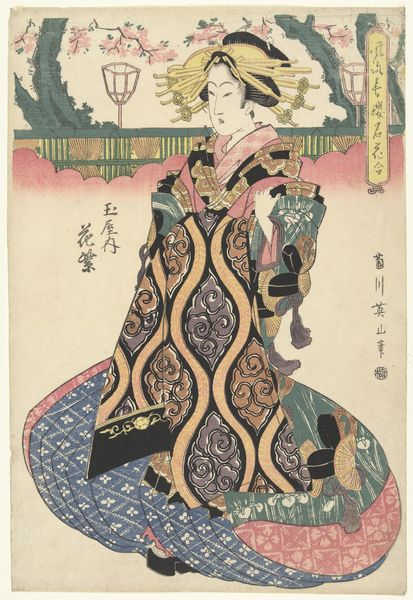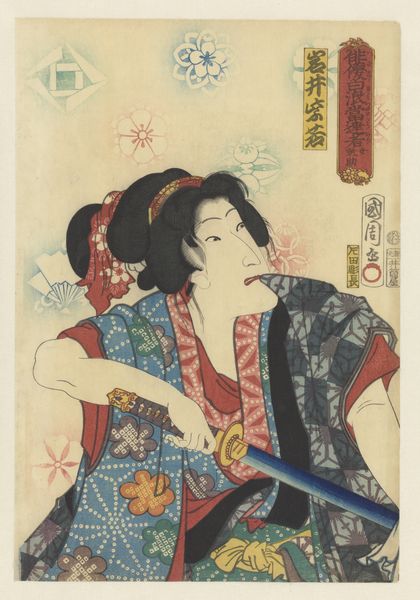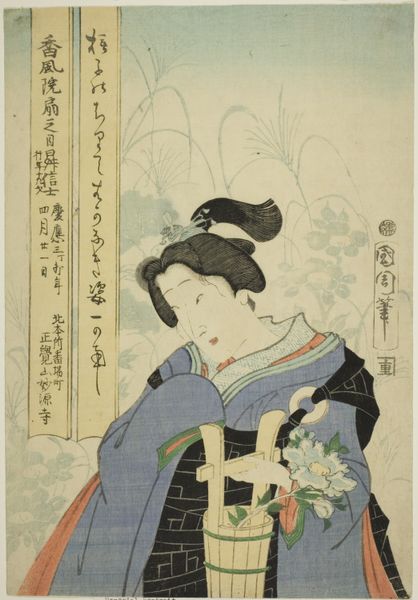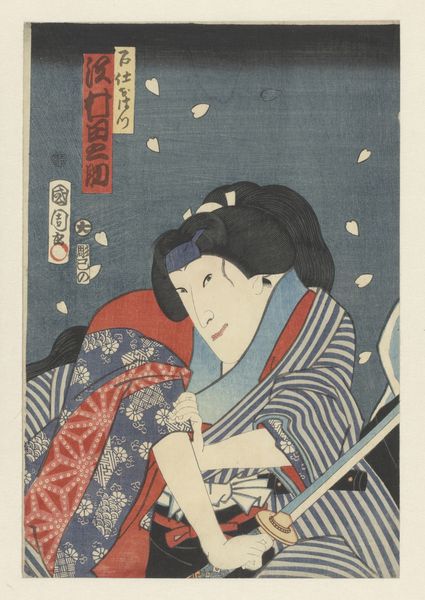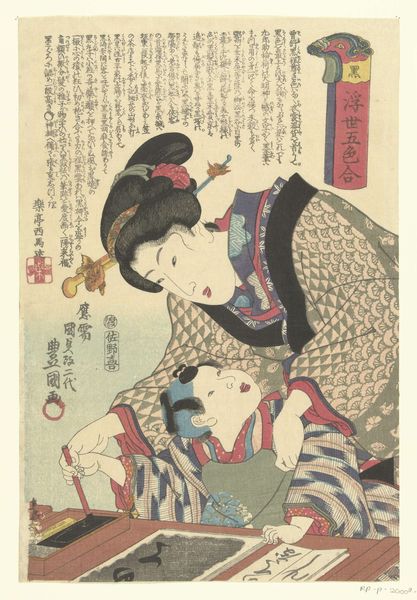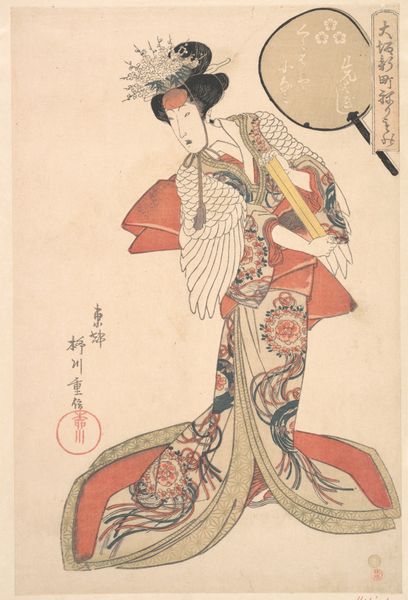
Willow quarter of the theatrical world, flowers in pairs at the height of prosperity 1864 - 1868
0:00
0:00
utagawakunisada
Rijksmuseum
print, woodblock-print
#
portrait
# print
#
asian-art
#
ukiyo-e
#
woodblock-print
#
genre-painting
Dimensions: height 368 mm, width 246 mm
Copyright: Rijks Museum: Open Domain
Curator: Let’s discuss Utagawa Kunisada's "Willow quarter of the theatrical world, flowers in pairs at the height of prosperity," a woodblock print created between 1864 and 1868, now residing here at the Rijksmuseum. What's your first take on this piece? Editor: It feels almost theatrical, ironically! The stylized figures, framed against those flat, decorative floral backdrops... it’s like looking at two miniature stages. Melancholy stages, though. Curator: Indeed. Kunisada, master of ukiyo-e, presents us with two figures, a male and a female, likely portraying characters from kabuki theatre, set amidst floral motifs symbolizing prosperity. Note how the division creates two separate planes, unified by similar stylistic and thematic elements. Editor: You know, that segmentation hits me—there's a real sense of isolation. Despite all the busyness of the patterns, the flowers, they seem utterly alone in their own worlds. And their gazes! Lost in thought... or maybe lost, period. Curator: Precisely. The artist juxtaposes the outward flamboyance typical of ukiyo-e with a profound inner quietude, a characteristic element in the portrait genre. The detailed costumes and carefully rendered facial expressions draw us into a narrative, despite its fragmentation. Editor: I love how he’s used flat planes to define space; it feels simultaneously decorative and daring. Also, something about the limited palette adds to the somber mood—especially how the skin tones are just these delicate pastels amidst the riot of colors. Curator: And if we unpack that "riot," we must recognize the intentional placement of complementary and contrasting tones, constructing a sense of spatial depth in defiance of traditional perspective. See how text further augments the graphic nature. Editor: Well, whatever technical wizardry is at play, the picture's managed to sink into me. I keep thinking about what stories they're holding back. What prosperity were they really hoping for? Curator: A reminder perhaps, that outward displays are rarely synonymous with inner peace. Kunisada captures not just the image, but a poignant undercurrent of longing. Editor: Absolutely. And it's in that tension, that push-pull, between dazzling surface and quiet sadness, that I feel the artwork truly lives.
Comments
No comments
Be the first to comment and join the conversation on the ultimate creative platform.




